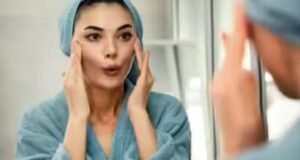 In a good news for men facing incessant hair loss, researchers have discovered that by plucking 200 hair strands in a specific pattern and density, they can induce up to 1,200 replacement hairs to grow!
In a good news for men facing incessant hair loss, researchers have discovered that by plucking 200 hair strands in a specific pattern and density, they can induce up to 1,200 replacement hairs to grow!
Scientists at the University of Southern California (USC) have demonstrated this on a mouse. “It is a good example of how basic research can lead to a work with potential translational value,” said lead researcher Cheng-Ming Chuong.
“The work leads to potential new targets for treating alopecia, a form of hair loss,” he added.
The study began a couple of years ago on the premise that hair follicle injury affects its adjacent environment, and that this environment in turn can influence hair regeneration.
Based on this knowledge, the researchers reasoned that they might be able to use the environment to activate more follicles.
To test this concept, they plucked 200 hair follicles, one by one, in different configurations on the back of a mouse.
When plucking the hair in a low-density pattern from an area exceeding 6 mm in diameter, no hair regenerated.
However, higher-density plucking from circular areas with diameters between 3-5 mm triggered the regeneration of between 450 and 1,300 hair strands, including ones outside of the plucked region.
The team showed that this regenerative process relies on the principle of “quorum sensing”, which defines how a system responds to stimuli that affect some, but not all members.
In this case, quorum sensing underlies how the hair follicle system responds to the plucking of some, but not all hair.
Through molecular analyses, the team showed that these plucked follicles signal distress by releasing inflammatory proteins, which recruit immune cells to rush to the site of the injury.
These immune cells then secrete signalling molecules such as tumour necrosis factor alpha (TNF-I), which, at a certain concentration, communicate to both plucked and un-plucked follicles that it’s time to grow hair.
The results were published in the journal Cell.
 Weekly Bangla Mirror | Bangla Mirror, Bangladeshi news in UK, bangla mirror news
Weekly Bangla Mirror | Bangla Mirror, Bangladeshi news in UK, bangla mirror news







